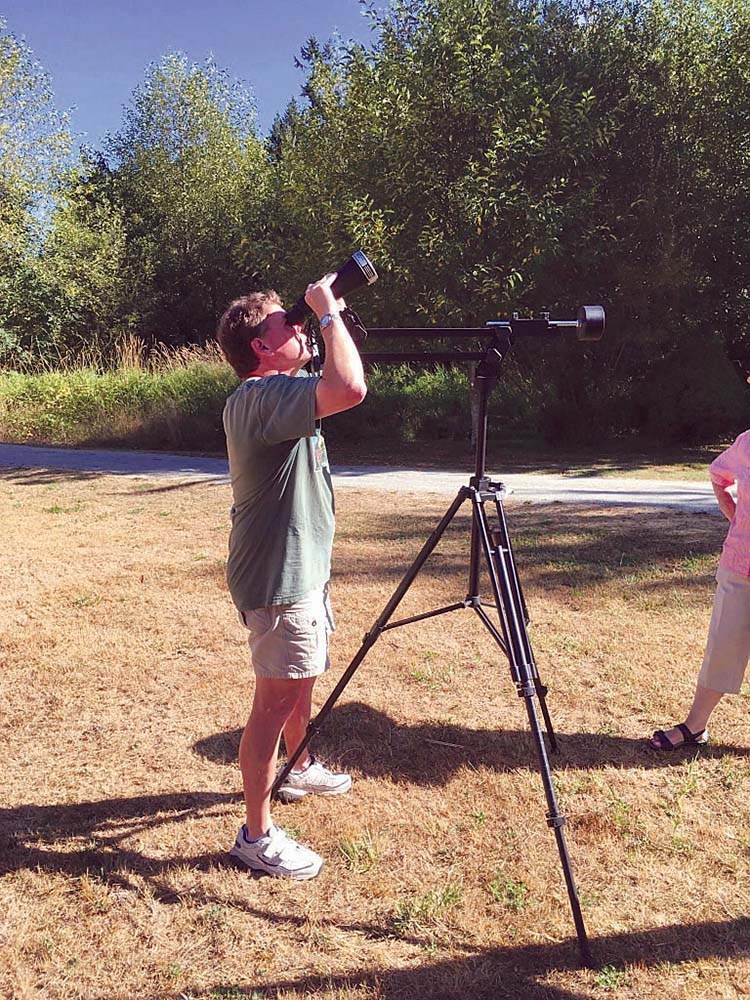September opens with some of the greatest tidal ranges of the year. The full moon occurred around dinner time on Aug. 30, about nine hours after the closest lunar perigee of the year at 357,181 km. The moon’s elliptical orbit means its distance from Earth ranges from about 356,000 to 406,000 kilometers. Elliptical orbits do that, of course; what still confuses me is how that range varies from month to month – it seems to increase and decrease about every six months or so, which I suspect is due to Earth’s own elliptical orbit around the sun. While I am still comfortable with some aspects of mathematics, this complexity of a three-body model isn’t one of them; neither is the reason for tidal maxima and minima lagging the full and new moon by one or two days. Regardless, with any luck you will have enjoyed the tides from this super-sized full moon and its apocalyptically eerie dull red appearance if the smoke persisted.
Should clear skies return in September, we’ll have our best opportunity of the year to view the Andromeda Galaxy. As I wrote last month, find Cassiopeia and follow the rightmost “V” down about 20 degrees to the curve of bright stars that lead right to the big square of Pegasus. The “V” points to Mirach; with the binocs, look up about one field-of-view to another less bright star, then repeat. You should see another not-so-bright star up and left and a faint blurry object up and to its right. The latter is our sister galaxy – Andromeda, aka M31. The viewing is definitely better without a full moon in the sky and that will begin in early September. Interestingly, the moon and Jupiter both rise together about 22:00 in the ENE on Sept. 4 and Jupiter’s moons are nicely spread out on both sides of its disc and visible in binoculars. Andromeda will be easily visible all night long for the next two weeks or more until a new moon begins to appear in the west around Sept. 22.
September also brings many opportunities to watch the International Space Station (ISS) fly by. Those benighted individuals who are “morning people” will be rewarded with multiple passes in the pre-dawn hours until mid-month, when normal folk will be able to see it in the evening at more civilized times. I realize “benighted” is arguably pejorative but to my “unique” sense of humour it seemed so appropriate in the circumstances. The Heavens Above website has comprehensive and accurate lists of the ISS passes and other satellites as well. I highly recommend it.
The club is planning a grand re-opening of our observatory on Saturday, Sept. 23 at 17:30. Dignitaries will be present for an opening ceremony and a tour of our facility; scopes will be set up to demonstrate the usage of the new pads. Following the opening ceremony, we intend to move right into observing (weather permitting): sunset is at 19:11. Admittance is free and all are welcome. Donations to fund our ongoing outreach projects will be gratefully accepted.
A proposal was submitted last year to the Small Bodies Names Committee of the International Astronomical Union, which then approved and made the proposal official. To quote from the Sunshine Coast Astronomy club website:
There is a newly named asteroid up there:
(10514) Harlow = 1989 TD16
Discovery: 1989-10-04 / H. Debehogne / La Silla / 809
The entry reads: Scott Harlow (1963–2020) was an amateur astronomer in British Columbia, Canada, who joined RASC Sunshine Coast Centre in 2011, served as club librarian and on the Board of Directors and worked at many club meetings and outreach events. He was particularly active as a volunteer at the club’s observatory and coordinated donations of telescopes to the club.
I did not know Scott well but in the year or so of our acquaintance he seemed to personify that “it is better to give than to receive.” I soon learned of his affliction with diabetes and was amazed at his energy and attitude despite that disease’s cruel limitations on his health and life choices. In one of life’s savage ironies, namely that “no good deed goes unpunished,” it ultimately ended his life. I can think of no more appropriate tribute to his spirit than to have his name preserved for posterity in this way.
The Sunshine Coast Astronomy Club will resume its public meetings on Sept. 8 at the Sechelt Public Library at 19:00. Charles Ennis, past president of the Royal Astronomical Society of Canada, will be presenting a talk on antique constellations – those sky asterisms no longer in use or superseded by new naming conventions. The Sky This Month will also be presented. Please check the club website for details at: sunshinecoastastronomy.wordpress.com/





